By Ryan Varjassy
After the test program was finished on NACL, Vic began the same -65 conversion on NACM followed by NACN. Andrew had made arrangements with Desmond to have Vic use his old factory hangar at Sandown as well as hiring a previous worker from the Cardiff factory to help in the conversion of the two aircraft. The engine transplant went smoothly with Andrew and Desmond making sure all the parts that were needed were delivered to Sandown. Flight tests were completed again by Neville Duke who
described the performance of the -65 as “a box full of birds” and “homesick angel” referring to it's lift and speed capabilities. The Firemaster 65's were ready for the summer firefighting season again in Cannes, France and also in Portugal...and with the new engines, the planes performed exceptionally well according to the pilots. The aircraft was proving to be extremely capable and Andrew was believing that he could get production up and running again based on the new Firemaster 65. NACO and NACP were left as -34's and were never converted to the more powerful -65.
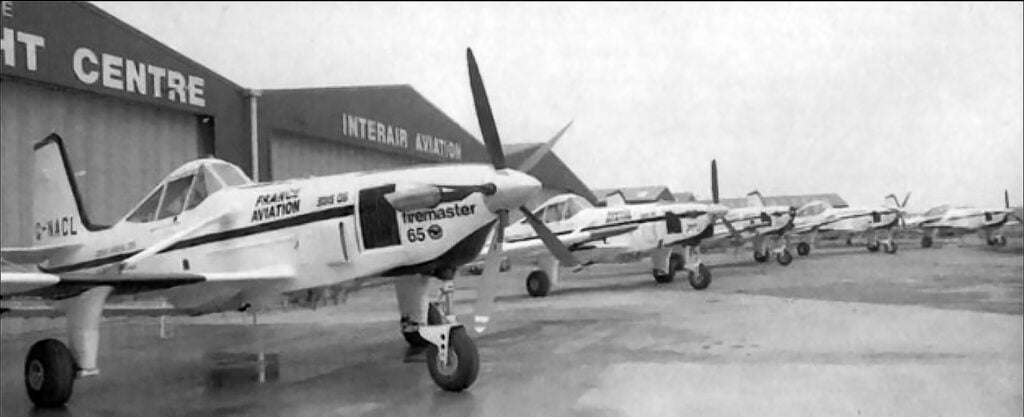
In 1991 the three -65 Firemasters again went to France for firefighting and NACP worked for Heyboer BV in Lelystad, Netherlands in August of that same year. NACO appeared to have not have worked at all that summer in 1991.
From 1988 to 1992, Andrew would change the corporate name and transfer assets multiple times. Croplease Ltd, Croplease PLC, Croplease Enterprises and eventually EPA Aircraft Company were all owners of the Fieldmaster assets and its production rights all under Andrew MacKinnon's ownership and direction. Early 1992 saw the Fieldmaster project begin it's decline. The Utva Aviation plan that Desmond had originally cultivated (and which Andrew inherited) was dead due to war and political sanctions in Yugoslavia. The summer firefighting contracts in France had not come through for the 1992 season and despite taking the aircraft to numerous airshows, Andrew was unable to secure any future orders and sales. This was essentially the end of Desmond's dream ag aircraft and Andrew's business venture.
Andrew had been hemorrhaging money for the past few years and he had finally had enough. He decided to try and recoup some of his losses by parking the aircraft and selling off whatever he could. All of the engines, propellers and instruments were removed, sold... and the airframes were parked and left for years.
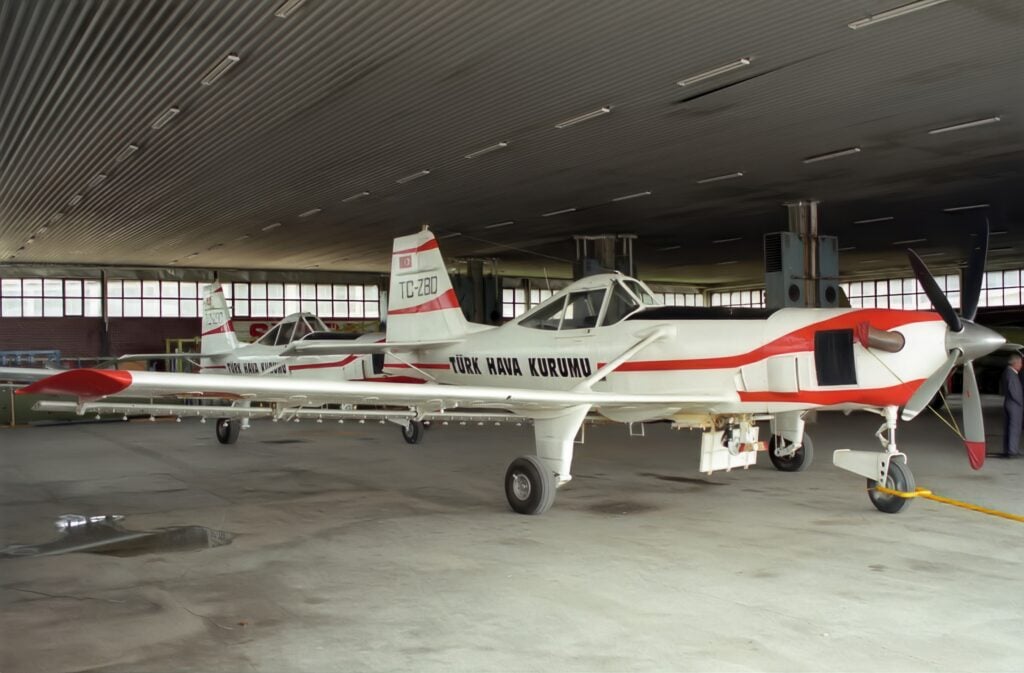
NACM Firemaster 65 (TTAF 1403 hrs), NACN Firemaster 65 (TTAF 1280 hrs) and NACO Fieldmaster -34 (TTAF 279 hrs) were parked at Bournemouth Airfield and NACL Firemaster 65 (TTAF 814 hrs) and NACP Fieldmaster -34 (TTAF 543 hrs) were placed at Sandown, alongside the already dismantled NRDC and the engineering sample outside of Desmond's old hangar. It was an extremely sad and ironic ending that these aircraft returned to the home of their conception only to be left for dead. 1995 saw Andrew once again try to sell the Fieldmaster and NACM and NACN were put back into flying condition with -65 engines.
They performed some promotional demonstrations around the UK and went to a few airshows, but nothing became of Andrew's efforts and the planes were once again mothballed and it appeared that the Fieldmaster was dead for good.
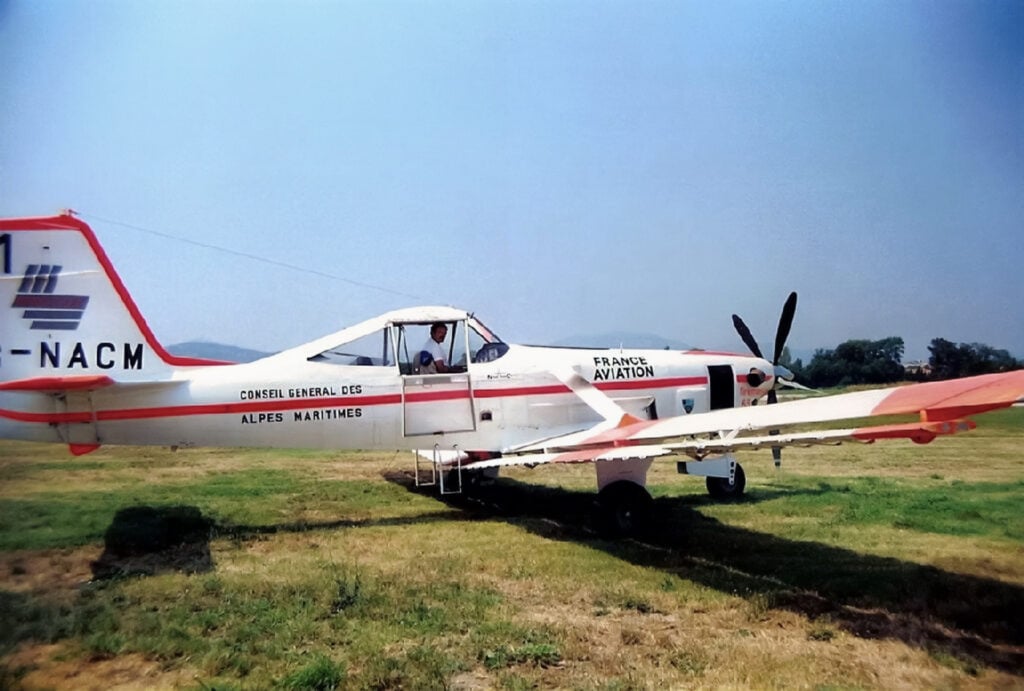
By 1995 the Fieldmaster program was essentially over. Owner Andrew MacKinnon and the current company he headed, EPA Aircraft, had found himself with a product he could not produce nor sell. Andrew had also run out of working contracts for the aircraft so they had been parked and all the valuable parts were stripped and sold in an attempt to recoup some of the losses he had incurred.
But in a strange twist of fate, the Fieldmaster was about to get a second chance at life from an extremely unlikely source. Turk Hava Kurumu (THK), based at Etimesgut Airfield in Ankara, Turkey, was that apparent saviour of the abandoned Fieldmasters. They had an extremely long and proud history within Turkish aviation and had wanted to get back into aircraft production in 1992. The Turkish government was in desperate need of newer and more capable firefighting aircraft so it was decided that THK would take up the reigns and build their own aircraft for the role. THK was also the agency that actually did the aerial firefighting, so it kept everything centralized at one location.

It is unclear how THK and EPA Aircraft managed to meet, but a deal was made for THK to acquire the liquid assets and a production licensing agreement from Andrew Mackinnon and his EPA Aircraft Company in 1996. This procurement included all 5 of the production aircraft, the unfinished airframes from Utva Aviation in Yugoslavia, all the manufacturing, production and assembly jigs, all of the paper documents from engineering plans to blueprints. However, none of the aircraft were in a completed condition so they were disassembled, crated and trucked from the UK to Turkey in the summer of 1997. NACM, NACN and NACO left from Bournemouth and only NACP from Sandown. NACL was left behind until it suddenly disappeared late in 1999. According to Utva, the trucks showed up and all the materials were hastily loaded and very quickly they were off, as stated in an email that was received in 2023 from Utva.
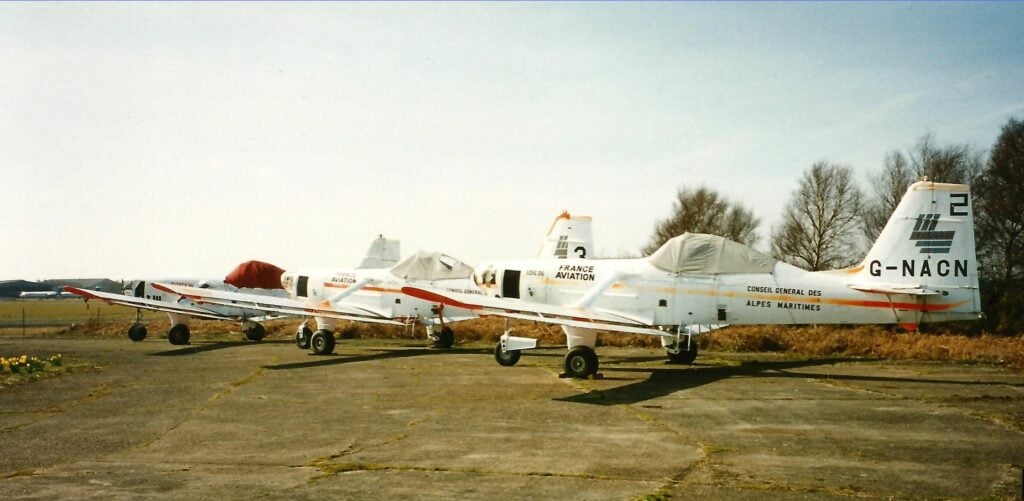
The story out of Turkey can be quite confusing depending on what documentation you read and choose to believe. What is clear is that THK paid between 5 and 6 million British Pounds for what they received but their appears to be some confusion around whether they had purchased all the rights to the aircraft or just a licensing agreement. The issue did make it into a London court but no results of the hearings were released publicly. It was also rumoured that THK was seeking 1.5 million Pounds from NDN aircraft but again there have not been any public records released about this demand. The entire purchase and subsequent issues plagued this program from the start. THK's president at the time was Atilla Tacoy and he had made the decision to buy the Fieldmasters unilaterally, which annoyed many of his THK employees, not to mention his government superiors. A production plan was proposed that would see TAI Aviation partner with THK which would help spread the cost among both agencies but Tacoy would not budge insisting that THK would carry out the production on it's own.
A team of engineers was assembled but when they arrived at an old hangar at the Etimesgut Airfield they expected to find the beginnings of a production line, but sadly this was not the case. They were met with hundreds of moulds, parts and thousands of technical drawings. There were crates containing fuselages and parts and they came to the conclusion that this entire project had been rushed and nothing had been organized. The engineers got to work and it was decided that they would start by building 2
-65 Taysu aircraft, which is what they would be known as moving forward. Some reports suggest that THK built these 2 aircraft from scratch, but in reality they were NACM and NACN that were originally built in Cardiff, Wales then converted to -65's at Sandown by Vic Osborne. THK acquired 2 Pratt -65's and 2 Hartzell 5 blade propellers and on October 29, 1998...NACM (now TC-ZBC) flew once again for the Republic Day Ceremonies at the Etimesgut Airfield. There was much fanfare around this first flight and it was announced that THK would be making it's own firefighting aircraft which at the time was the main source of revenue for THK. TC-ZBD (NACN) would fly the next year in 1999 but THK was under increasing pressure to produce aircraft quickly. There were plans in the works for the initial 9 airframes to be made flight worthy, the 5 from the UK and the 4 airframes from Yugoslavia and future plans saw the fleet grow to close to 30 aircraft over the next 2 years giving THK the means to fight fires for years to come.

But things started to unravel quickly. Atilla Tacoy could not shake his critics and was forced to resign under the slanders he was facing. The Minister of the Interior was forced to act and a lawsuit was filed against Tacoy for acquiring the aircraft of a failed company and for damaging the business and reputation of THK. Tacoy would pass away from cancer in 2001 but his court case continued for three more years after his death which resulted in his acquittal. The government was in desperate need of firefighting aircraft and made the decision to buy a fleet of 12 M18B Dromaders from PZL in Poland. Turkey had also made the decision to ban aerial spraying due to environmental concerns which was the
number one source of income for THK followed by aerial firefighting. This government ban dealt the final blow to the Fieldmaster and the entire project was completely eliminated. The program was irreversibly thrown away and the Minister if the Interior stated that “the resources of our country were saved”. Behind the scenes there were cost over-runs, unorganized factory space, accusations of corruption, lawsuits and severe mismanagement with much of this remaining quiet and kept behind closed doors in order to avoid further embarrassment to both THK and the Turkish government.
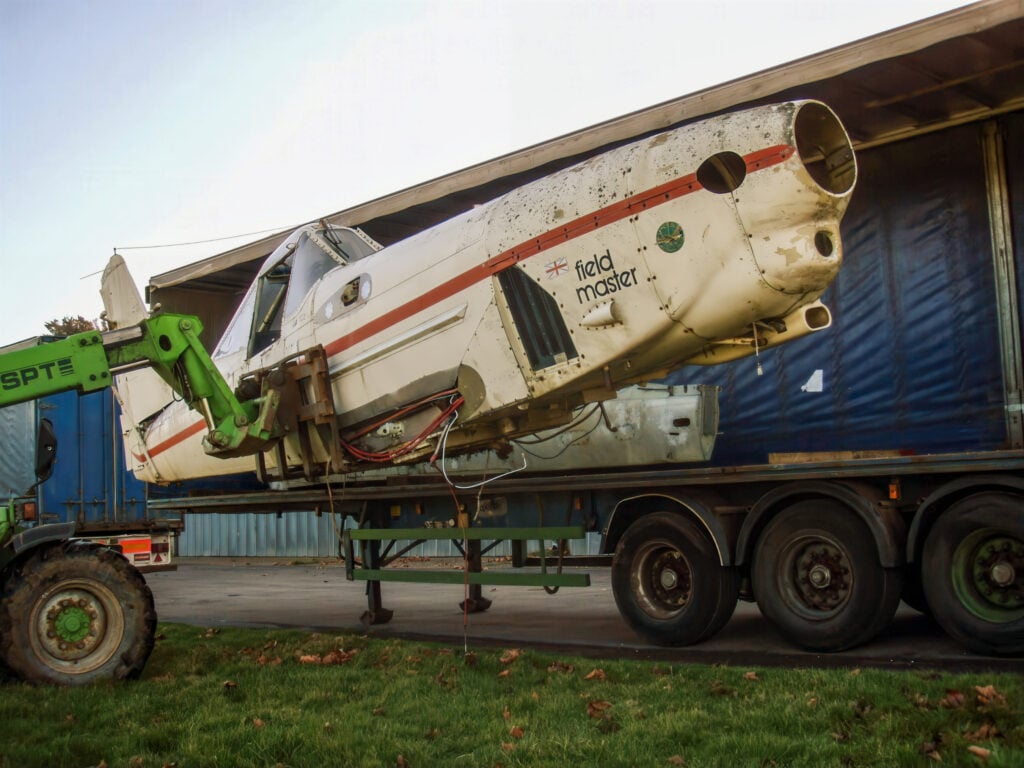
The two -65's were once again stripped of all their useful parts and the 4 aircraft were placed in the boneyard behind a hangar on the south end of the airfield at Etimesgut. NACM, NACN, NACO and NACP were once again destined to be discarded and forgotten. But after sitting for a few years, it was decided that these aircraft should be celebrated as an accomplishment and should therefore be put on display. For some though, these wonderful aircraft were destroyed for nothing and to quote Turkish reporter Sedat Halac, “they were placed in front of the THK museum as an exemplary lesson for those who try to do useful work for this country.”
The first aircraft was put on display at the THK Ankara Aviation Museum. This Fieldmaster is painted with TC-ZBC on the tail but it is clearly not the ZBC that was built and was flown. The display aircraft is a -34 Fieldmaster as noted by 4 distinctive differences. The -34's had a short front wheel mudguard, an angled air filter inlet, three mesh covered vents on the left side cowling and a small air inlet under the propeller on the nose cowling. The other -34 was taken 150 miles (240 KM) south to the Aksaray Bilim Science Center. One of the -65's made its way 290 miles (465 km) to to a Technical Aviation High School in Istanbul and the fourth aircraft remains at THK Etimesgut airfield to this very day, or so it was thought.

The Fieldmaster Resurrection Project was started in July 2023 from a chance online meeting between Vic Osborne of Wales, UK and Ryan Varjassy from Saskatchewan, Canada. The two were a world apart but quickly realized they both had a passion for the lost Fieldmaster. Vic had worked on the aircraft personally and Ryan saw one in a magazine in the mid 1980's and had a fascination with the aircraft ever since. Ryan's dad, Joe Varjassy, was a well known crop duster for over 30 years and Ryan worked with him in the ag industry for many years starting as a young boy. This time spent around ag flying made Ryan develop a love for ag aircraft which he still carries today at age 50. Vic at 75 has a few years on his younger cohort but shares the same enthusiasm for the elusive Fieldmaster.
The two men quickly developed a plan save one of the airframes in order to have it displayed back in the United Kingdom where it was originally born. The search began for any information they could find. Countless hours scouring the internet, sending letters and emails and starting a FaceBook page dedicated to the cause began to show results. Vic still had contacts from his days as an engineer on the Fieldmaster and after the FB launch, more people came out of the woodwork. Former employees, aviation enthusiasts, some Fieldmaster experts and Desmond's son Roddy Norman are all involved with the project.
The research seemed to raise more questions than it answered for a few months but the more interaction with the online contacts, the more the pieces began to fall into place. The tracking of the production, engine conversions, foreign spraying and firefighting all came from the online searches and contacts that were made. Information came in from all over the UK, Europe and from as far away as Australia.

One of the most important tasks was tracking down all 6 of the airframes. There was much speculation and false information that needed to be proved or disproved and after much reading and consulting they believed that they had accounted for all of the minus one...NACL...the first production Fieldmaster and
the first of the fleet to be converted from a -34 to a -65. The sale of all the assets to THK was supposed to include all 5 production aircraft but NACL remained at Sandown till late 1999, some 2 years after the other 4 aircraft had been shipped and also after the THK production program was cancelled. So where was it? The 4 aircraft in Turkey were accounted for but NACL seemed to have vanished. One of our group experts, Martin Forster, had said that he had spoken directly to someone who helped load NACL onto a truck bound for Ankara, Turkey. There was no reason to doubt Martin but there was absolutely no evidence that NACL was actually there. The project group has acquired almost every published photograph of the aircraft as well as a massive amount photos from private collections. They searched Google Earth Historical Images and had found satellite images of all the Fieldmasters in various locations they were known to be. However, Ryan came across some photos that he had not seen before and they were dated Sept 12, 2023 . It was NACL, still in the France Aviation livery she had when she was last seen at Sandown some 24 years ago. And she was at the THK Etimesgut Airfield. Ryan contacted the publisher of the small article that featured the photos and he did confirm that NACL is still at the Etimesgut Airfiled and was sadly going to be sent for scrap at some point in the future. But this has now raised another question. It is now a fact that all five aircraft made it to Etimesgut but only 4 are accounted for with the missing aircraft being NACM (TC-ZBC). It was assumed that the last aircraft seen on the Satellite photos at Etimesgut was NACN, but it turns out that it was NACL which means that NACN is still there somewhere. The current theory is that it is inside an old hangar at the airfield with all of the parts, fuselages, jigs and papers from Yugoslavia.

The Fieldmaster Resurrection Project is currently trying to acquire NACL from THK to have it shipped back to the UK, but this is proving to be a difficult task. Our proposal to obtain NACL has finally reached the desk of the correct people at THK after months of emails, letters and phone calls begging for any information on who could help us. Apparently our request will need to go before the Board of Trustees for THK but currently we have no information regarding that timeline.
Additionally, Martin Forster has also obtained the location of the original prototype NRDC which never left the UK and was abandoned at Sandown for the better part of 21 years. After moving through a few locations NRDC would end up near Wainfleet along the eastern coast of the UK. She was supposed to become part of a crop dusting museum collection but those plans never materialized due to poor health of the owner. Martin is handling the negotiations on the possibility of also acquiring NRDC for display.
The group was in discussions with the Wight Aviation Museum at the Sandown Airfield about having a Fieldmaster airframe displayed at their facility as Sandown is the obvious choice for NRDC to be displayed as she was born there and was laid to rest in the exact same spot. Unfortunately the Wight Aviation Museum has since reversed their interest in the aircraft so the search is on for a new location. The South Wales Aviation Museum seems like it would be a good fit as it is only 6 miles from the production factory at Cardiff but nothing has been discussed with them at this time.
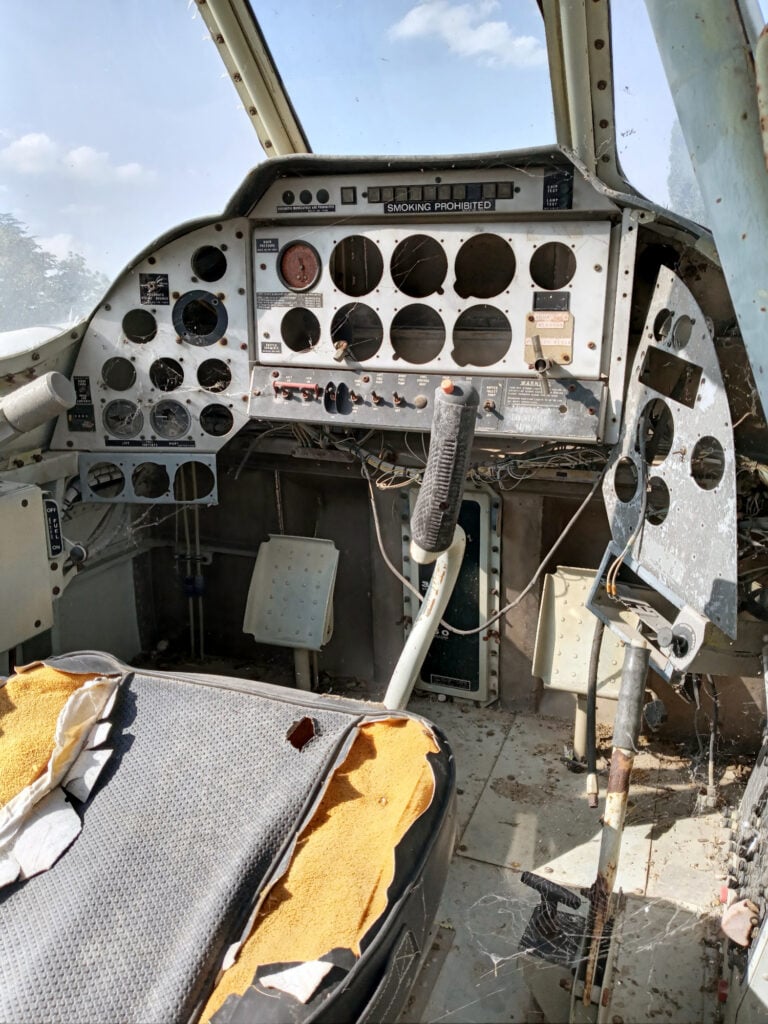
The Fieldmaster's ultimate demise was the product of a multitude of issues and failures and not just one singular problem. Firstly, the program suffered from mismanagement essentially from it's inception resulting in financial constraints throughout it's entire existence. Second, the cost of the Fieldmaster was wildly expensive for the time. The purchase cost of a production line aircraft was rumoured to be between $450,000 to $500,000 in the mid to late 1980's which for the time was a huge financial commitment for an unproven aircraft that was so different from the ag planes of the day. Thirdly, because it was so different it was going to be difficult to convince established operators to switch to an unknown platform from their traditional tail-draggers. Drawings and design concepts had been developed for a tail-dragger version of the Fieldmaster but it was never developed beyond that stage.
Fourth, it would have been almost impossible for the Fieldmaster to break into the American market which at the time was arguably the largest ag plane market in the world. Turboprop conversions were already in use in America and factory production of turboprop ag planes had begun. Also there were many options already in existence for operators: Air Tractor, Thrush, Ag-Cat, PZL Dromader, Cessna, Piper and Weatherly. The American market already had a full plate of aircraft to choose from. The world market would have provided more opportunity for sales as an aerial firefighter with the ability to also do pest control as well with the main target areas being Australia and New Zealand but they were also set in their aircraft choices just as the Americans were. And lastly, the Fieldmaster was conceived at a time when aerial spraying was being banned throughout Europe which undoubtedly hurt the possibility of sales. Even in the UK where she was built, aerial spraying and aerial firefighting were already being phased out at the time the Fieldmaster was in production. So it was a combination of timing, changing laws and poor corporate decisions that really stopped the Fieldmaster from being a commercial success.
The Fieldmaster Resurrection Project has come a long way in their short nine months of existence. They have amassed quite possibly the worlds largest collection of data, photos, videos and an overall clear picture of the Fieldmasters existence. The project has now reached it's most difficult phase so far, acquisition of these airframes before they are lost again or destroyed. The project group is on the verge of obtaining the original aircraft NRDC which will be the first major milestone completed.
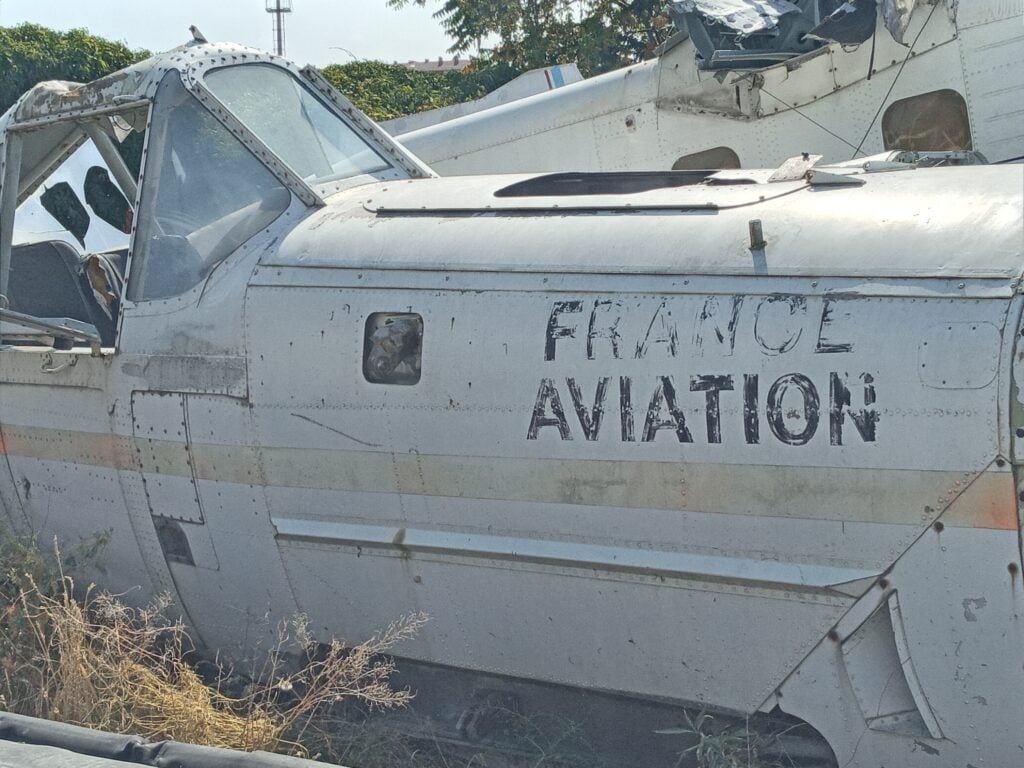
The Fieldmaster Resurrection Project is currently seeking donations to help with the fundraising for this project in order to save these aircraft from destruction and being erased from existence. The Fieldmaster aircraft were an important part of ag and aerial firefighting aviation history, albeit a failed story that deserved a better outcome than it had. We now have the chance to rescue two airframes and depending on the success of the fundraising, will determine the extent of the restorations. Private donations and corporate sponsors are not only welcome but required in order to progress with the project.
The Fieldmaster Resurrection Project can be contacted by the following outlets: Email: fieldmasterresurrectionproject@gmail.com
Facebook: https://www.facebook.com/groups/1483419635727874 or search for NDN/NAC Fieldmaster Resurrection






